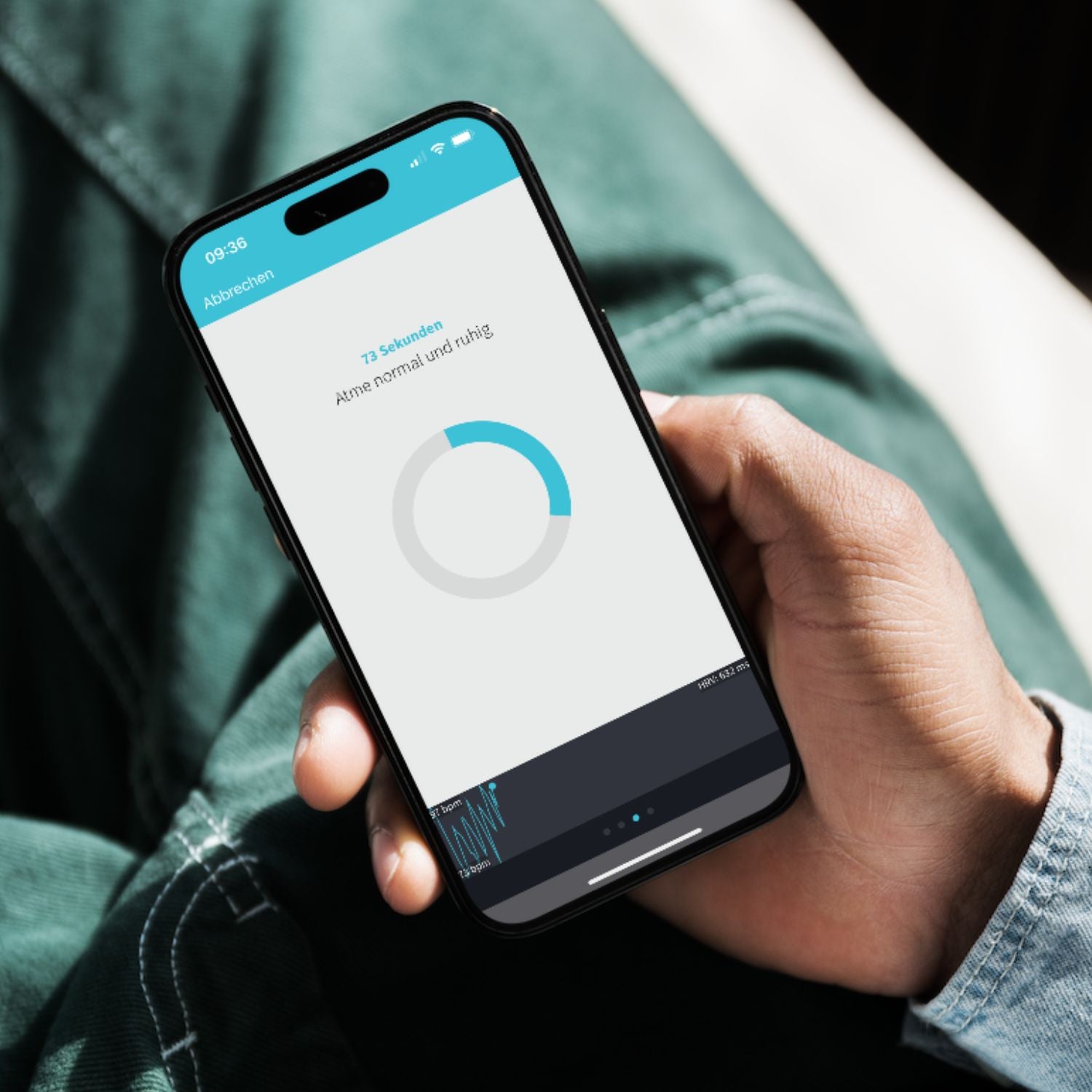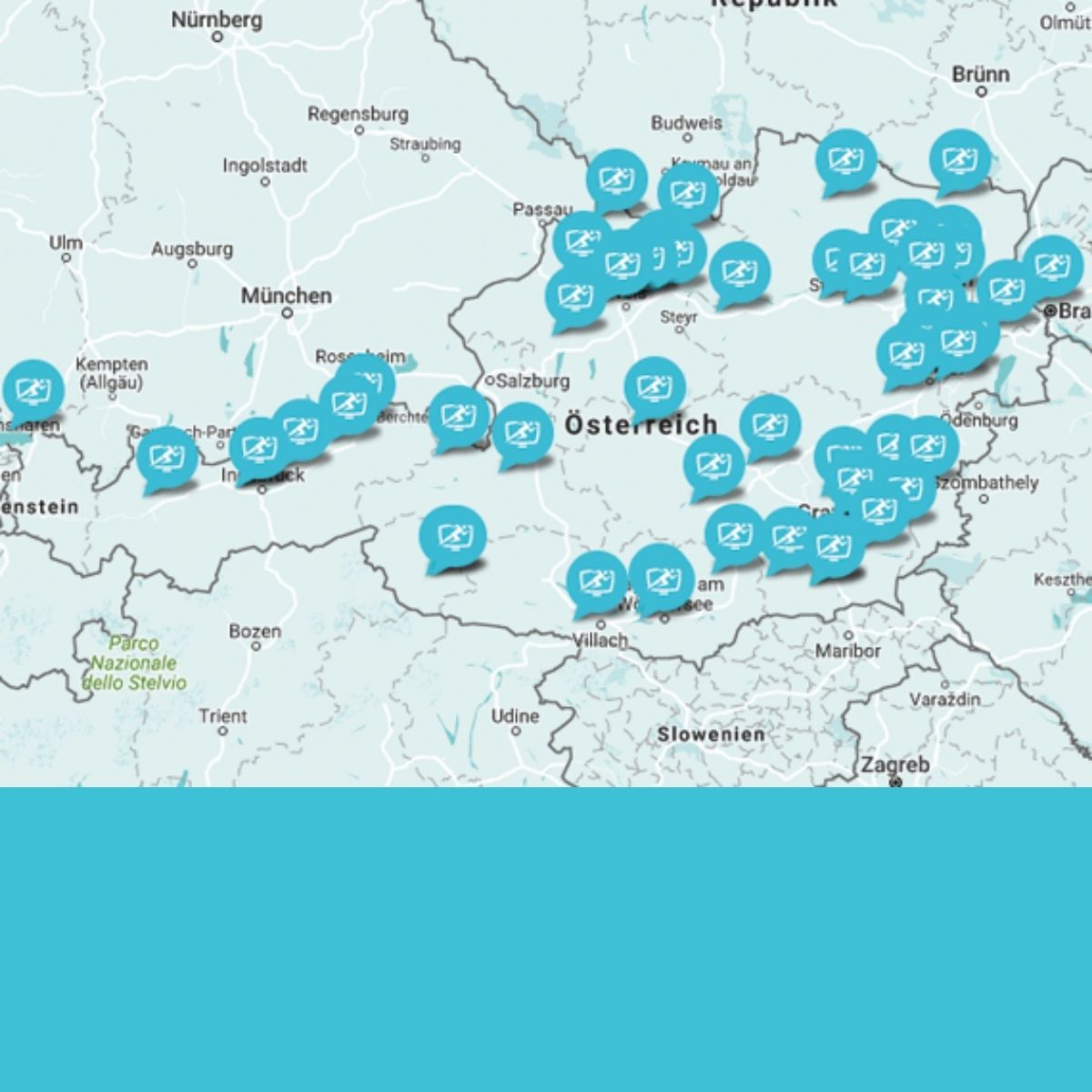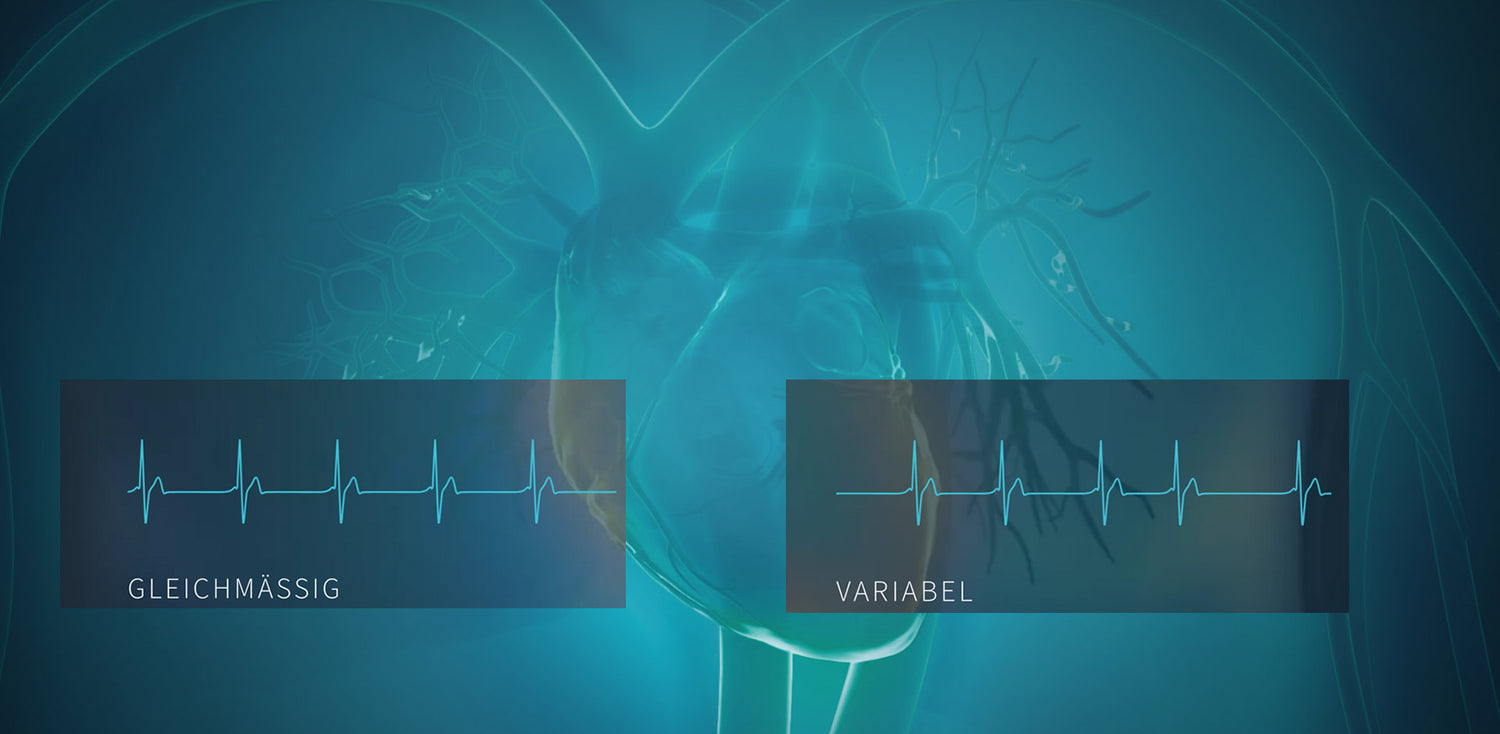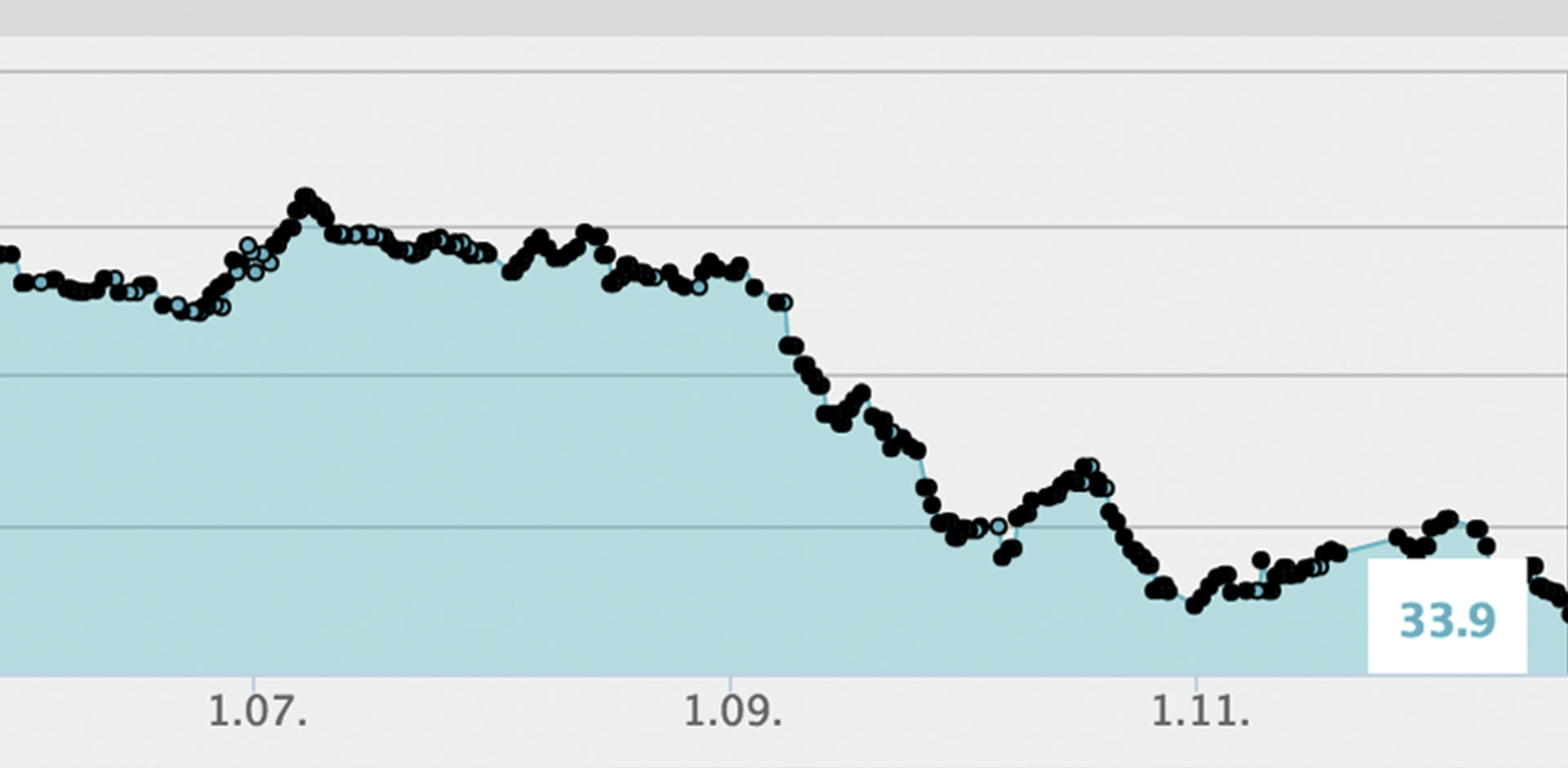The basics of HRV
The parameter heart rate variability represents a statistical number of each individual measurement with the Vitalmonitor. It is the factor SDNN (=standard deviation) of the series of measurements of the individual heartbeat intervals. This basically means the average variation of the intervals. The higher this value, the greater the fluctuation in the intervals between beats, which means that the regulatory processes of the autonomic nervous system are very much at work in the heart. In standardized short-term measurements, this means high activity of the parasympathetic nervous system.

HRV and everyday life
The basic level of heart rate variability of a person is very much dependent on inherited and acquired factors. In addition, as already mentioned in Bio-Age, it is subject to a long-term aging process. The long-term observation of the heart rate variability provides information about the development of the control processes in the organism. A decreasing HRV provides the information of a "creeping loss of function" of the control processes, triggered by a shift of the balance between sympathetic (drive) and parasympathetic (recovery). The onset of stress dominance in the absence of adequate unloading leads to a systematic drop in HRV (in the longitudinal section of morning measurements). Forcing relief can also reverse this deterioration of the balance!

There are, of course, individual limits to the increase in HRV. However, the response of HRV and Bio-Age in the above example show a very clear relief response, which normally also includes an increase in performance.
For people between the ages of 30 and 40, approximately:
<20msec = bad 20-40msec = enough 40-60msec = good >60msec = very good
The younger people are, the significantly higher the values must be; if people are older, they may be somewhat lower.
Of course, there are also people who have significantly higher values. About 10% of the persons reach stable values above 100msec - about 3% even above 200msec. Measurements that go beyond 100msec should be checked in the butt block for measurement quality - especially if they are atypical for a person. It could be unclean measurements or there could be too many extrasystoles, which makes the calculation incorrect despite automated error correction. This quality control can be performed on the course, ECG and plot in the portal.
This means that the course of the heart rate variability - in addition to the bio-age - is very well suited to provide a trend indication of the development and thus to keep the systematic change of the organism in focus.












Leave a comment
All comments are moderated before being published.
This site is protected by hCaptcha and the hCaptcha Privacy Policy and Terms of Service apply.